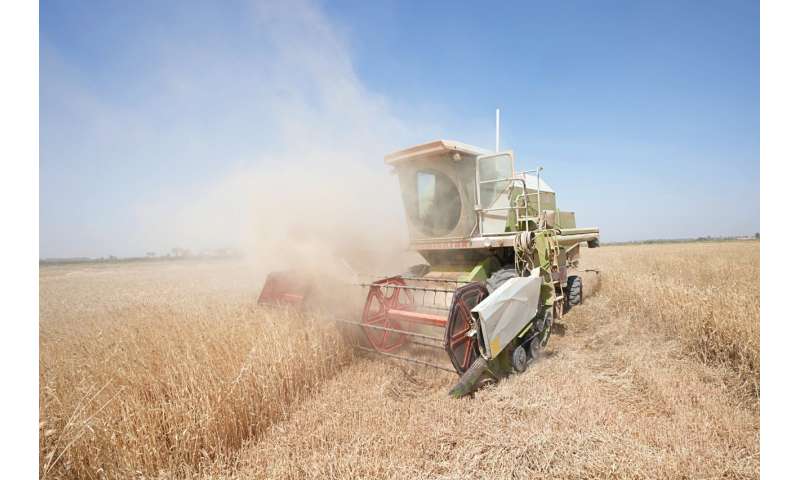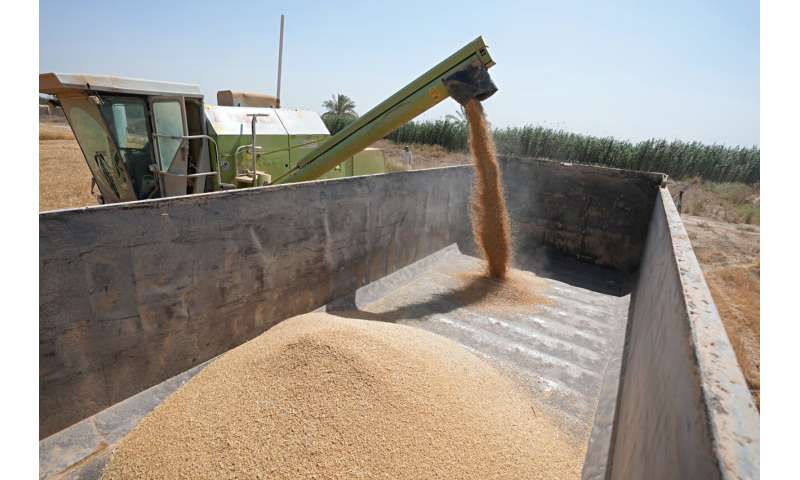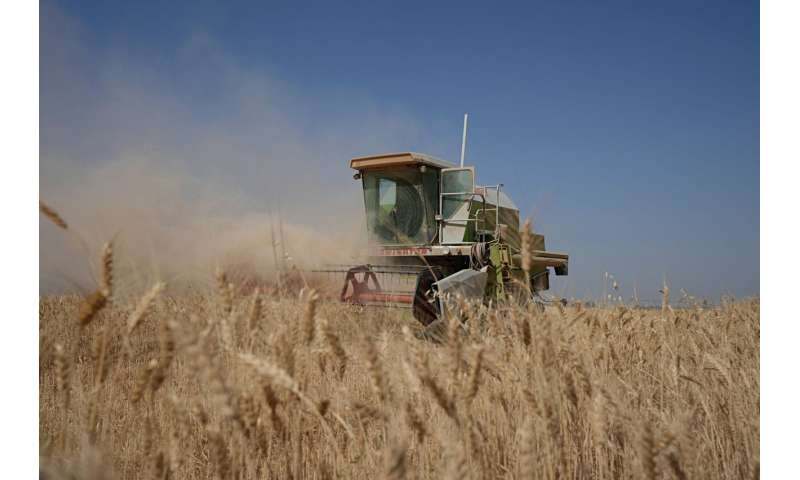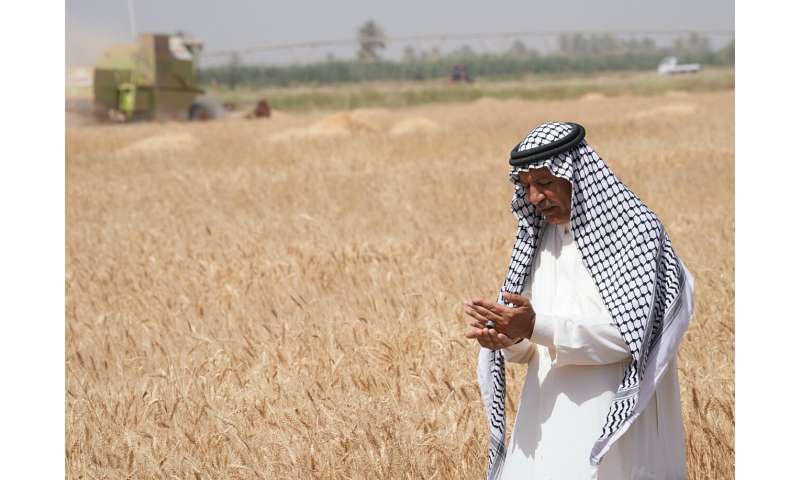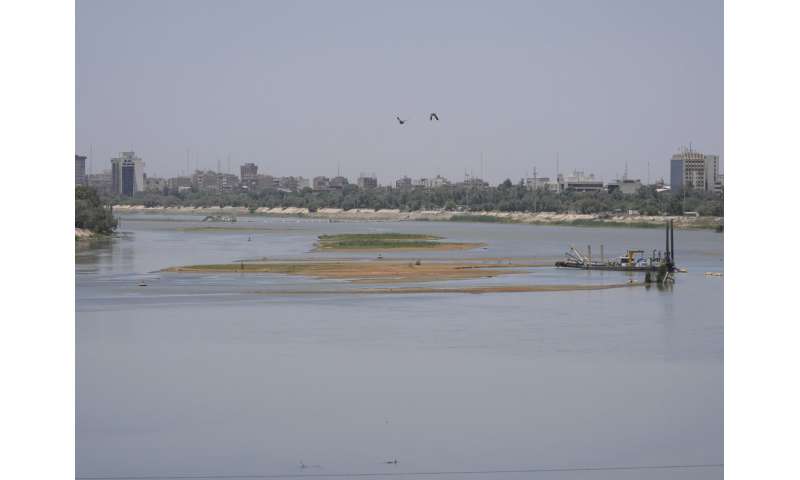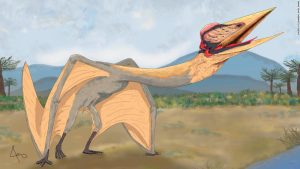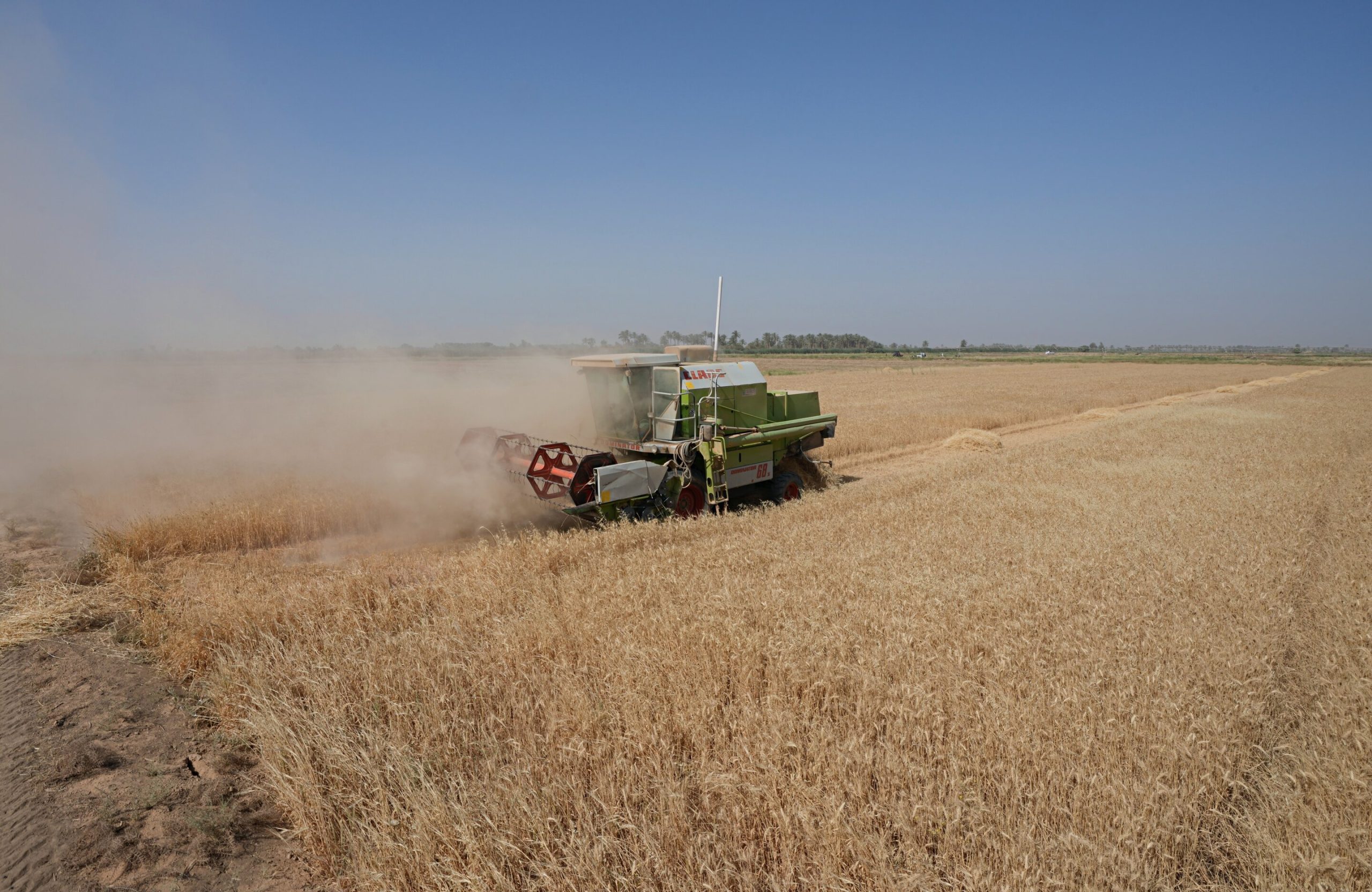
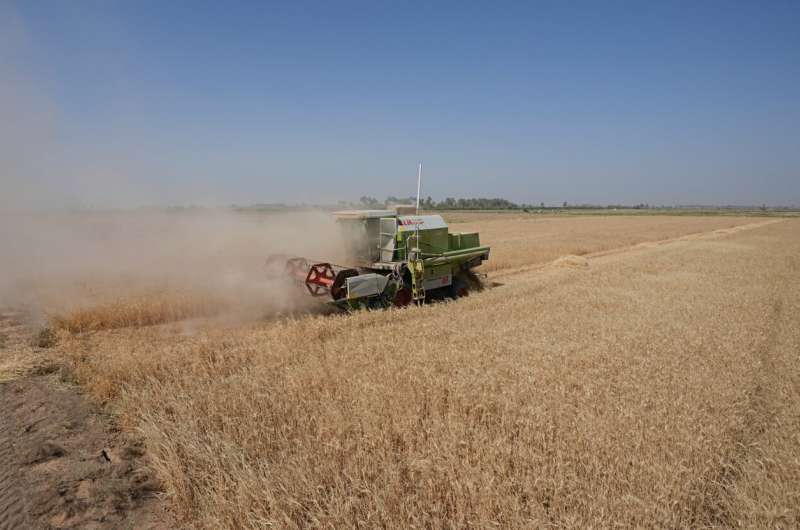
Salah Chelab crushed a husk of wheat plucked from his sprawling farmland south of Baghdad and inspected its seeds in the palm of one hand. They were several grams lighter than he hoped.
“It’s because of the water shortages,” he said, the farm machine roaring behind him, cutting and gathering his year’s wheat harvest.
Chelab had planted most of his 10 acres (4 hectares) of land, but he was only able to irrigate a quarter of it after the Agriculture Ministry introduced strict water quotas during the growing season, he said. The produce he was growing on the rest of it, he fears, “will die without water.”
At a time when worldwide prices for wheat have soared due to Russia’s invasion of Ukraine, Iraqi farmers say they are paying the price for a government decision to cut irrigation for agricultural areas by 50%.
The government took the step in the face of severe water shortages arising from high temperatures and drought—believed to be fueled by climate change—and ongoing water extraction by neighboring countries from the Tigris and Euphrates rivers. All those factors have heavily strained wheat production.
Wrestling with the water shortage, Iraq’s government has been unable to tackle other long-neglected issues.
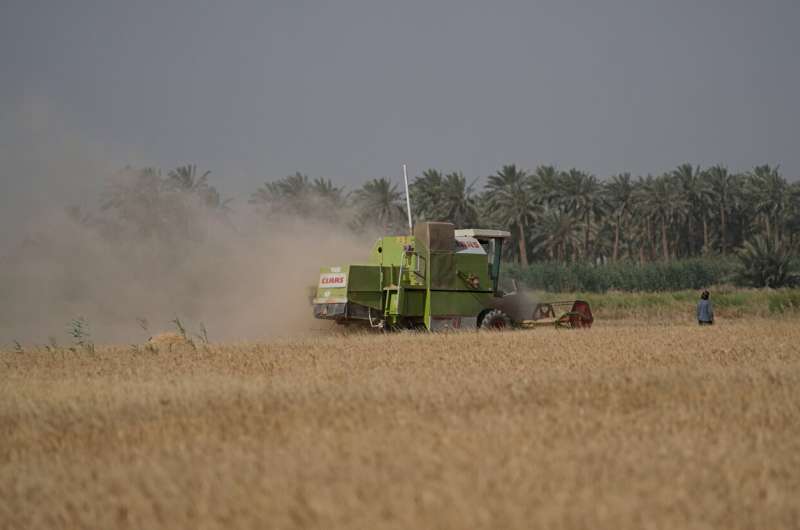
Desertification has been blamed as a factor behind this year’s relentless spate of sandstorms. At least 10 have hit the country in the past few months, covering cities with a thick blanket of orange dust, grounding flights and sending thousands to hospitals.
“We need water to solve the problem of desertification, but we also need water to secure our food supplies,” said Essa Fayadh, a senior official at the Environment Ministry. “We don’t have enough for both.”
Iraq relies on the Tigris and Euphrates rivers for nearly all of its water needs. Both flow into Iraq from Turkey and Iran. Those countries have constructed dams that have either blocked or diverted water, creating major shortages in Iraq.
Water Resources Minister Mahdi Rasheed told The Associated Press that river levels were down 60% compared to last year.
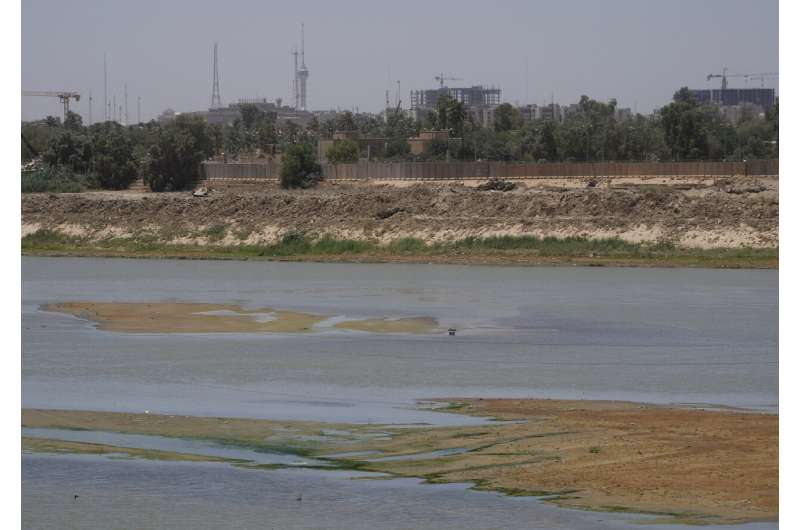
For Chelab, less water has meant a smaller grain size and lower crop yields.
In 2021, Chelab produced 30,000 tons of wheat, the year before that 32,000, receipts from Trade Ministry silos show. This year, he expects no more than 10,000.
His crops are both rain-fed and irrigated via a channel from the Euphrates. Due to low precipitation levels, he has had to rely on the river water during the growing season, he said.
Government officials say change is necessary.
The current system has been inefficient and unsustainable for decades. Water scarcity is leaving them no choice but to push to modernize antiquated and wasteful farming techniques.
“We have a strategic plan to face drought considering the lack of rain, global warming, and the lack of irrigation coming from neighboring countries as we did not get our share of water entitlements,” said Hamid al-Naif, spokesman at the Agriculture Ministry.
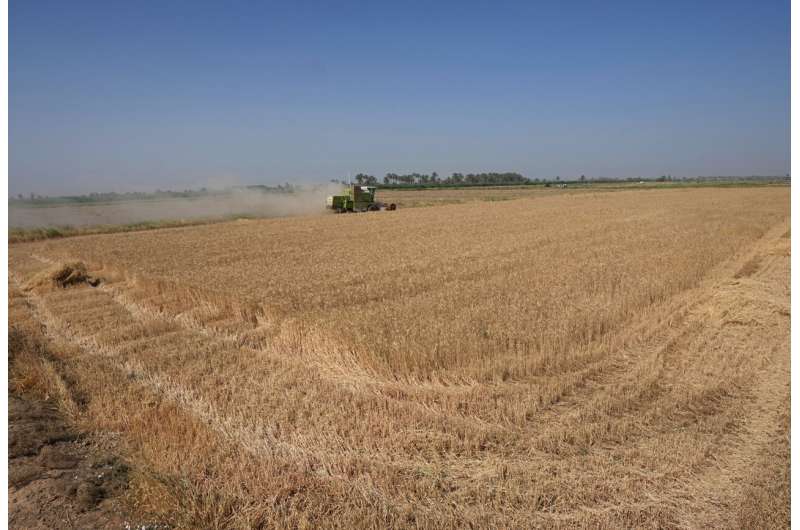
The ministry took measures to devise new types of drought-resistant wheat and introduce methods to increase crop yields.
“We are still dealing with irrigation systems of the 1950s. It has nothing to do with the farmers,” he said. “The state must make it efficient, we must force the farmer to accept it.”
Iraqi farmers have historically been heavily dependent on the state in the production of food, a reliance that policymakers and experts said drains government funds.
The Agriculture Ministry supports farmers by providing everything from harvesting tools, seeds, fertilizers and pesticides at a subsidized rate or for free. Water diverted from rivers for irrigation is given at no cost. The Trade Ministry then stores or buys produce from farmers and distributes it to markets.
Wheat is a key strategic crop, accounting for 70% of total cereal production in the country.
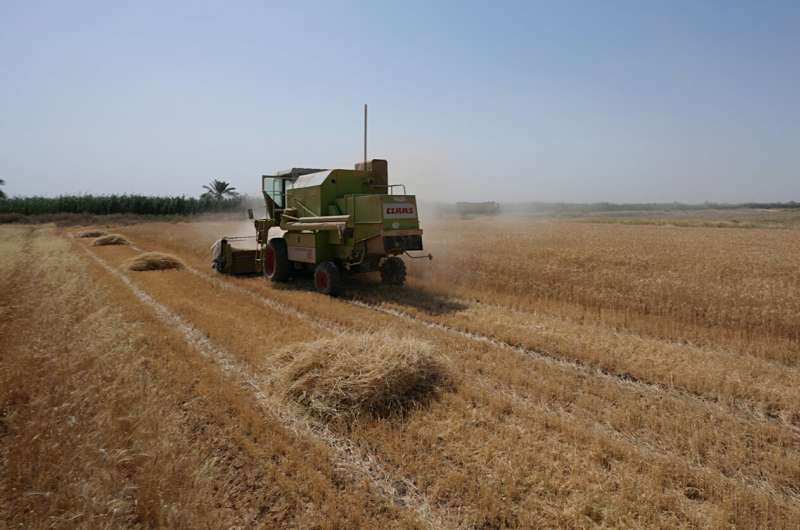
Planting starts in October and harvest typically begins in April and extends to June in some areas. Last year, the Agriculture Ministry slashed subsidies for fertilizers, seeds and pesticides, a move that has angered farmers.
Local demand for the staple is between 5-6 million tons a year. But local production is shrinking with each passing year. In 2021, Iraq produced 4.2 million tons of wheat, according to the Agriculture Ministry. In 2020, it was 6.2 million tons.
“Today we might get 2.5 million tons at best,” said al-Naif. That would require Iraq to drive up imports.
Most of the wheat harvest is usually sold to the Trade Ministry. In a sign of the low harvest, so far there are currently only 373,000 tons of wheat available in Trade Ministry storehouses, al-Naif said.
To meet demands amid the recent global crisis in the grain market, the government recently changed a policy to allow all Iraqi farmers to sell their produce to the Trade Ministry silos. Previously, this was limited to farmers who operated within the government plan.

A combine harvester at the middle of a wheat field harvesting crops in Yousifiyah, Iraq Tuesday, May. 24, 2022. At a time when worldwide prices for wheat have soared due to Russia’s invasion of Ukraine, Iraqi farmers say they are paying the price for a government decision to cut irrigation for agricultural areas by 50% due to severe water shortages arising from high temperatures, drought, climate change and ongoing water extraction by neighboring countries from the Tigris and Euphrates rivers – all factors that have heavily strained wheat production. Credit: AP Photo/Hadi Mizban 
A tractor transfers the harvested wheat grain onto a trailer in Yousifiyah, Iraq Tuesday, May. 24, 2022. At a time when worldwide prices for wheat have soared due to Russia’s invasion of Ukraine, Iraqi farmers say they are paying the price for a government decision to cut irrigation for agricultural areas by 50% due to severe water shortages arising from high temperatures, drought, climate change and ongoing water extraction by neighboring countries from the Tigris and Euphrates rivers – all factors that have heavily strained wheat production. Credit: AP Photo/Hadi Mizban 
A combine harvester at the middle of a wheat field harvesting crops in Yousifiyah, Iraq Tuesday, May. 24, 2022. At a time when worldwide prices for wheat have soared due to Russia’s invasion of Ukraine, Iraqi farmers say they are paying the price for a government decision to cut irrigation for agricultural areas by 50% due to severe water shortages arising from high temperatures, drought, climate change and ongoing water extraction by neighboring countries from the Tigris and Euphrates rivers – all factors that have heavily strained wheat production. Credit: AP Photo/Hadi Mizban 
Farmer Salah Chelab standing in his field in Yousifiyah, Iraq Tuesday, May. 24, 2022. At a time when worldwide prices for wheat have soared due to Russia’s invasion of Ukraine, Iraqi farmers say they are paying the price for a government decision to cut irrigation for agricultural areas by 50% due to severe water shortages arising from high temperatures, drought, climate change and ongoing water extraction by neighboring countries from the Tigris and Euphrates rivers – all factors that have heavily strained wheat production. Credit: AP Photo/Hadi Mizban 
Significantly lower water levels are seen on the Tigris River, in Baghdad, Iraq, Saturday, May 28, 2022. At a time when worldwide prices for wheat have soared due to Russia’s invasion of Ukraine, Iraqi farmers say they are paying the price for a government decision to cut irrigation for agricultural areas by 50% due to severe water shortages arising from high temperatures, drought, climate change and ongoing water extraction by neighboring countries from the Tigris and Euphrates rivers – all factors that have heavily strained wheat production. Credit: AP Photo/Hadi Mizban
Back in Chelab’s farm, the wheat is ready to be transported to the silo.
“It’s true we need to develop ourselves,” he said. “But the change should be gradual, not immediate.”
Iraq’s prized rice crop threatened by drought
© 2022 The Associated Press. All rights reserved. This material may not be published, broadcast, rewritten or redistributed without permission.
Citation:
Severe water shortages strain wheat harvest in Iraq (2022, May 29)
retrieved 29 May 2022
from https://phys.org/news/2022-05-severe-shortages-strain-wheat-harvest.html
This document is subject to copyright. Apart from any fair dealing for the purpose of private study or research, no
part may be reproduced without the written permission. The content is provided for information purposes only.
